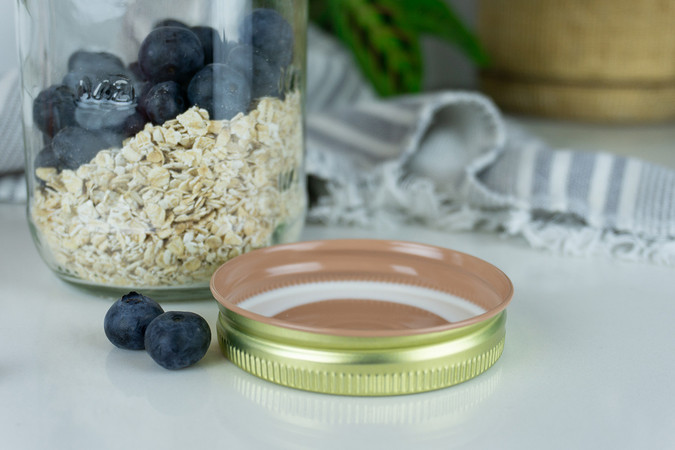Have you ever seen the terms CT, TW, T/O, or Lug before? In the world of bottle and jar closures, these terms and abbreviations refer to the style of cap and how it screws on to its container. Depending on the products being packaged inside the bottle or jar and the sealing process used, one style of closure may have advantages over the other for you.
The two main types of cap finishes are “Continuous Thread (CT)” and “Lug (Twist-off, TW, or T/O).” The continuous thread neck finish has a thread that wraps all the way around the opening of the jar or bottle without any breaks in the threading.
CT finishes are normally written out as “xx/400” or “xx/450.” For example, a 70/450 Gold Metal Plastisol Lined Cap is a closure that has a 70mm opening diameter that fits a 450 thread style and depth. Thread style numbers in the 400 range denote a CT cap.
When CT caps get applied to the top of a container, the ridge inside of the cap will follow the thread on the container and tighten down as it is spun around the top. These closures are the perfect choice for hand application, since they are able to be tighten all the way down without concerns about stripping the threading on them.
Lug, or twist-off, is a different type of finish than continuous thread. The threading on the jar or bottle has breaks in it, creating multiple threads around the opening of the container. Lug finishes are typically written out as either “xx mm T/O” or “xx-2020.” The first number again corresponds to the opening diameter of the jar in millimeters and the second number refers to the thread style or GPI (Glass Packaging Institute) finish. If the second number is in the 2000 range, then it has a lug finish.
Lug caps are a little more difficult to apply by hand than CT caps. They are generally designed to be applied by a capping machine, because they require a specific amount of torque to be applied to the cap to create a seal. If applying these caps by hand, they typically require only around a quarter of a turn to tighten, instead of the many revolutions needed on a CT cap. If a lug cap is over-tightened, it can strip and become unusable. Lug closures are also usually cheaper than continuous thread caps.
If you would like to learn more about continuous thread and lug finishes, or have specific questions about what type of cap you need for your bottle or jar packaging process, give us a call, email us, or jump on a LiveChat here on our website! Our packaging experts are always ready to help!


